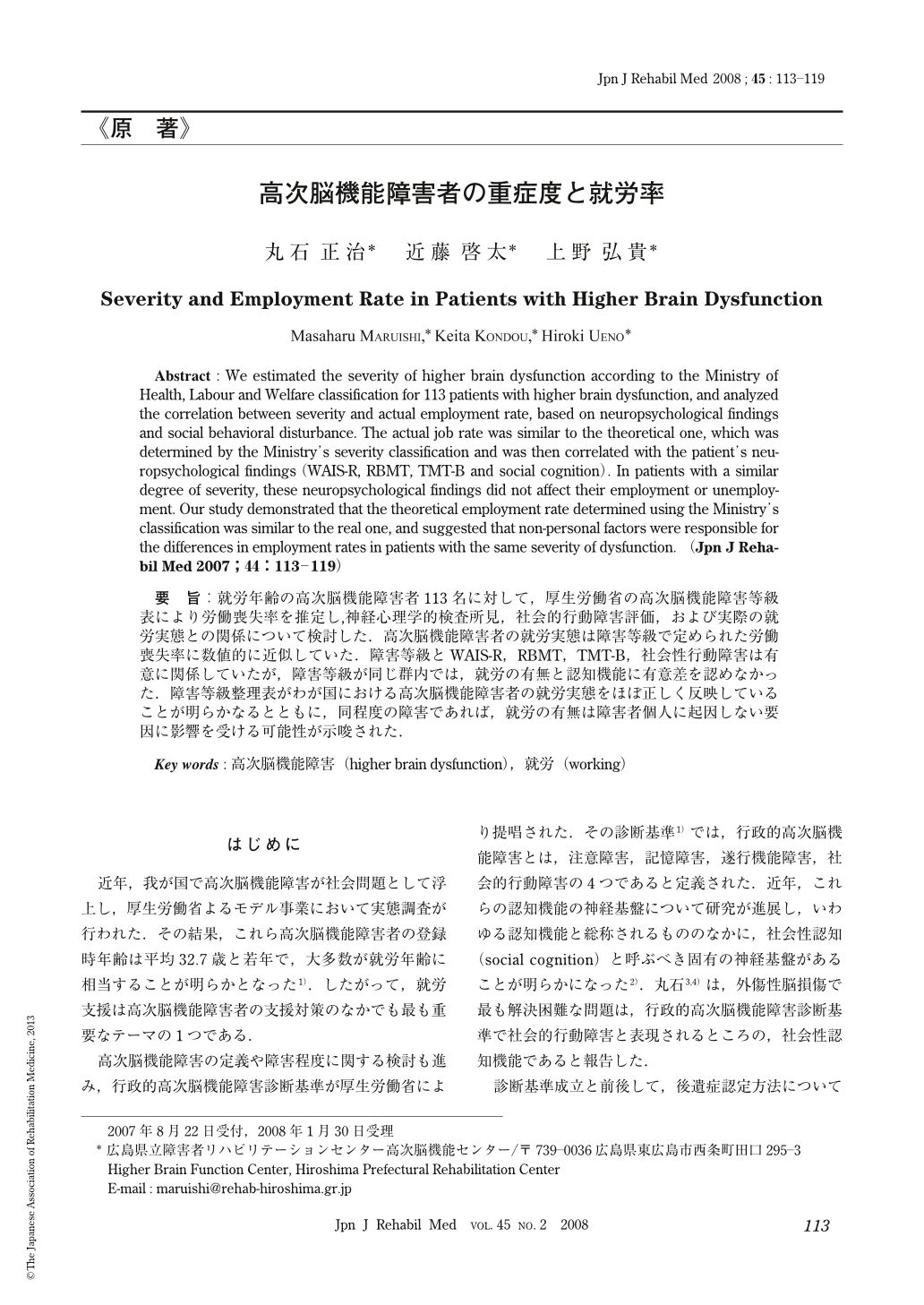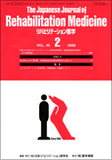Japanese
English
- 販売していません
- Abstract 文献概要
- 1ページ目 Look Inside
- 参考文献 Reference
要旨:就労年齢の高次脳機能障害者113名に対して,厚生労働省の高次脳機能障害等級表により労働喪失率を推定し,神経心理学的検査所見,社会的行動障害評価,および実際の就労実態との関係について検討した.高次脳機能障害者の就労実態は障害等級で定められた労働喪失率に数値的に近似していた.障害等級とWAIS-R,RBMT,TMT-B,社会性行動障害は有意に関係していたが,障害等級が同じ群内では,就労の有無と認知機能に有意差を認めなかった.障害等級整理表がわが国における高次脳機能障害者の就労実態をほぼ正しく反映していることが明らかなるとともに,同程度の障害であれば,就労の有無は障害者個人に起因しない要因に影響を受ける可能性が示唆された.
Abstract : We estimated the severity of higher brain dysfunction according to the Ministry of Health, Labour and Welfare classification for 113 patients with higher brain dysfunction, and analyzed the correlation between severity and actual employment rate, based on neuropsychological findings and social behavioral disturbance. The actual job rate was similar to the theoretical one, which was determined by the Ministry's severity classification and was then correlated with the patient's neuropsychological findings (WAIS-R, RBMT, TMT-B and social cognition). In patients with a similar degree of severity, these neuropsychological findings did not affect their employment or unemployment. Our study demonstrated that the theoretical employment rate determined using the Ministry's classification was similar to the real one, and suggested that non-personal factors were responsible for the differences in employment rates in patients with the same severity of dysfunction.

Copyright © 2008, The Japanese Association of Rehabilitation Medicine. All rights reserved.


